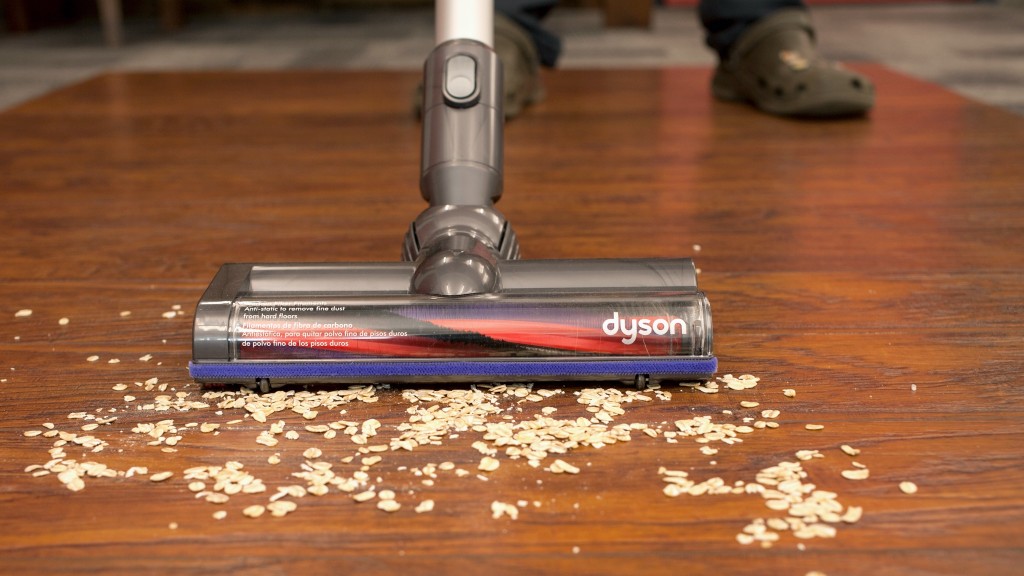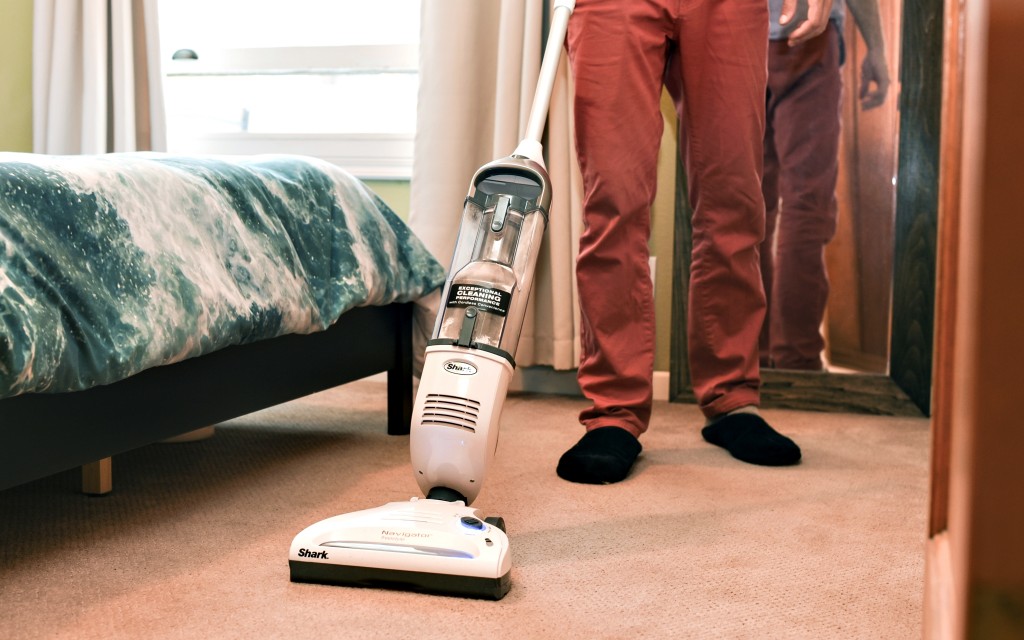To find out which stick vacuums are truly the best, we bought the top models on the market today and subjected them to an exhaustive barrage of tests. Comparing their performance side-by-side, we grouped similar tests into four rating metrics — Convenience, Hard Surface Cleaning, Ease of Use, and Carpet Cleaning — each weighted proportionally to its importance. Each vacuum received an overall score from 0-100 based on its performance in each metric. The following text provides more detail on what tests made up each metric, what we were looking for, and how we scored.
Convenience
Convenience is the highest weighted metric of our test, as it is the most important trait for a stick vacuum to have. These products are primarily intended to be a quick and easy solution for cleaning up light messes — usually in between deep cleans of your home with a more powerful vacuum. The first test that we did in this metric, worth 35% of the final score, was assessing how well each product did at cleaning non-floor areas of your home. Many of these products transform into a handheld vacuum to allow you to clean hard-to-reach places, greatly increasing the convenience of the product.
We weighed each product in its standard, floor cleaning configuration, as a cumbersome vacuum isn't particularly convenient to use. Next, we awarded extra points to the cordless models of the group, as it is a definite benefit to navigate and clean your home without fear of snagging a cord. We then compared the battery life of each cordless model, running them on a low-pile carpet at full power and timing how long each vacuum lasted.
For the corded models, we compared the maximum reach of each vacuum, as these models have an unlimited runtime. Finally, we looked at the stability of each product — whether or not it could be stored standing upright or if it needed a dedicated wall mount.
Hard Surface Cleaning
Moving on to assessing the actual cleaning performance of these products, we first assessed how well each vacuum did at cleaning hard floors. These products are intended for quick cleanups of light messes, making them much more suited to getting debris off of hard floors than carpet. While these products can do a decent job at cleaning carpet, and we do evaluate that later, a traditional, higher-powered upright vacuum is really necessary to get most carpet — especially medium-pile, fluffy carpet — clean. This metric made up 30% of the final score.
For our first test, we spread out a measured amount of rice on a section of hardwood floor, then saw how many passes it took for each vacuum to clean up all of the debris. We ran the vacuum in the hard floor mode for this test, or the mode that most closely matched that if there was not a specific hard floor option.
We then performed a similar procedure with flour, though this time, we noted if the vacuum could successfully extract flour from the cracks between the boards. We ran each vacuum parallel and perpendicular to the cracks, noting the results.
Next, we spread out a ¼ cup of Cheerios, seeing if the vacuums would collect the cereal or simply plow it around. The crushed Cheerios were also particularly effective at clogging these products, with points being deducted from any of the vacuums that suffered this fate. We spread out a measured quantity of oats next, assessing how well each vacuum picked them up and how much residual oat dust remained.
Finally, we conducted a test with pet hair from a local groomer, spreading out a measured amount and then picking it up. Most of the vacuums collected all of the hair from the floor, so we placed more weight on the hair, actually making it into the collection bin rather than becoming tangled around the brush head.
Ease of Use
This metric made up 20% of the total score. This goes hand in hand with our convenience metric, though the tests are slightly different. The first thing we tested and compared between models was the different cleaning modes and options available — whether there was an option to turn the rotating brush head off or a high and low power cleaning mode. Next, we compared how well each vacuum could clean close to the edges of the room. We did this by spreading rice along the edge and corners of a room, then measuring the thickness of the residual strip of rice left behind.
We then compared how well each vacuum could clean under furniture, using cardboard boxes as our simulated sofa. We again used rice as a test mess, measuring how far each vacuum could collect the rice successfully.
Finally, we compared how well each vacuum handled — whether or not there was swivel steering on the main brush head, as well as the noise level produced.
Carpet Cleaning
The final metric in our test, Carpet Cleaning, accounted for the remaining 15% of the total score for each vacuum. We performed a very similar set of tests to the hard surface cleaning tests, with a few modifications. We used a linoleum roller to press the debris into the carpet, both on flat and fluffy carpets.
The first test again was using rice as a sample mess, with this test being conducted on both flat, low-pile carpet and fluffier, medium-pile carpet. For the flour test, we only used a section of low-pile carpet, as cleaning flour out of fluffy carpet is a task beyond most stick vacuums, much more suited for a traditional vacuum. We finished out this metric with the same testing procedure, using oats, pet hair, and Cheerios on both flat and fluffy carpets.
Conclusion
Hopefully, this has given you a bit more insight into our testing process and methods. There is no one perfect stick vacuum for every application, but hopefully, our detailed analysis will help you find the perfect model for your needs.










